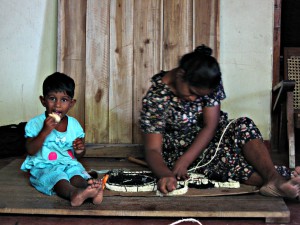- Exploring the genetic diversity of Ethiopian grass pea (Lathyrus sativus L.) using EST-SSR markers. They’re variable, especially in Gonder, and future collecting missions need to give “due attention to underrepresented regions”.
- Green leafy porridges: how good are they in controlling glycaemic response?. Pretty good, but the leafy greens may not be what you’re expecting.
- iDArTs: increasing the value of genomic resources at no cost. No cost for genotyping, that is; the analysis probably does cost.
- A versatile PCR marker for pungency in Capsicum spp. Beats having to taste each progeny plant, I suppose.
- Earth Ovens (Píib) in the Maya Lowlands: Ethnobotanical Data Supporting Early Use. The food preparation method is as old as the food itself; 3400-3000 bce.
- Patterns and processes in crop domestication: an historical review and quantitative analysis of 203 global food crops. Terrific, broad survey, worth more of a write-up.
- Changes in Avian and Plant Communities of Aspen Woodlands over 12 Years after Livestock Removal in the Northwestern Great Basin. Removing livestock leads to “recovery of biological integrity”. Because livestock are not integral to anything.
- Historical genomics of North American maize. Fascinating analysis indicates selection based on a limited set of ancestor lines, and “decreased diversity in the ancestry of individual lines”.
Nibbles: Cassava Conference, Wikipedia
- Report on June’s Global Cassava Partnership conference available (behind a paywall, but you can email Glenn Hyman for a copy).
- Crops for the Future sings the praises of Wikipedia: “Instead of writing the umpteenth fact sheet on crop x, should we not consider improving the relevant Wikipedia article?”
Nibbles: Conference, Debate, Review, Radio, Conserve, Film, Label, Threats, Subsidies, Academics, Backyard Breeder
- The 2nd Global Conference on Agriculture, Food Security and Climate Change “Hunger for Action” (Hanoi, Vietnam).
- Barder and Kinder Debate London Health Summit and Food Security Policy, so we don’t have to!
- A review of a review of restoration ecology for ecosystem services. Ag?
- The Seed Underground: listen to a radio interview with US author Janisse Ray. Ag!
- Or, if that fails to excite, listen to Save the axolotl! Um, sure, but why? and tell us whether there’s any ag in that.
- There’s definitely ag in More than Honey, a new documentary movie.
- FDA slaps down misleading claims of fortification (in chocolate syrup)
- Cassava mosaic and banana bacterial wilt add to the food security woes of DR Congo.
- Rice growers get all the goodies, complain Sri Lankan vegetable growers.
- Ivorian agricultural scientists to open access to their research results.
- A backyard breeder documents his search for a better bean.
Making money from senile coconuts
My ignorance knows no bounds, I’m pleased to say. Coconut wood, for example: I had no idea it was of any value. But a recent note alerted the Google coconut group to news of a project, funded by Australia, to develop “high quality veneer and veneer products from senile coconut trees in some Pacific island countries”.
Senile is their term, obviously, not mine. I’m far too sensitive to think that just because a coconut palm is 70 years old it is senile. The fact is, however, that old coconuts are not as prolific as youngsters, and may be worth more as timber than as a source of nuts. Certainly the wood looks very pretty, and Carey Smoot, the bloke who developed the industry sounds like quite a card.

What interested me about the story was the fuss it stirred up among coconut nuts. The big worry is how the smallholders who rely on coconuts as the foundation of their livelihoods would respond to buyers with big bucks. Top dollar now for an old tree might be irresistible; would the sellers replant? If not, what will they do when they’ve spent the cash? And, of course, are there other products, besides timber and commodity-priced coconuts, that would boost their incomes sustainably?
Indeed, people called the sustainability of the entire senile coconut timber project into question, and it was a comment in that discussion that really caught my eye.
it goes without saying of course that you DO NOT take more trees than can re grow sustainably otherwise you cut your throat so to speak … and deforestation of coconuts could be irreversible.
Actually, taking more trees than can regrow is exactly what you do do, if you are a normal, for-profit economic entity, especially when the growth rate of the trees is lower than the discount rate you use to decide among alternative investments. The point was made ages ago, largely in relation to fisheries, but is still not widely appreciated. In fact, the role of the discount rate in determining economic behavior is pretty much under-appreciated everywhere.
If you’ve got a great big gob of capital waiting to be put to work, you chop down and convert all the senile coconut palms you can, until that’s no longer profitable, and then you invest your much larger chunk of capital in something equally unsustainable, like whaling. Or intensively cultivated farmland.
Nibbles: Chicken history, Climate change, Quinoa, Smallholders
- When did the chicken cross the ocean? DNA tells all.
- Hot enough for you? James Hansen makes a statistical case.
- Quinoa mired in controversy. Will any of this affect grand plans for 2013 as International Year of Quinoa?
- Howard G. Buffett busts some myths about smallholder farmers.